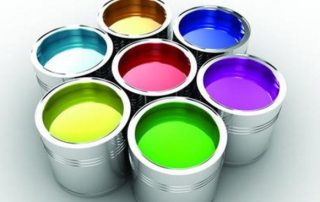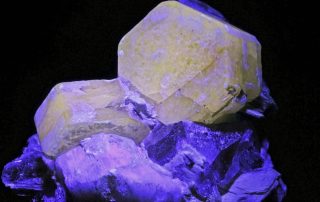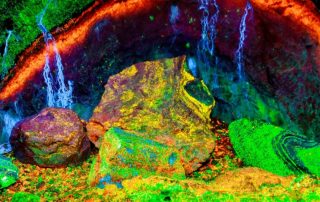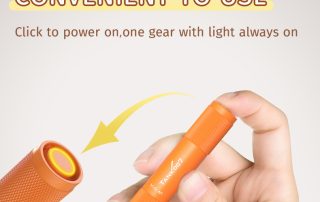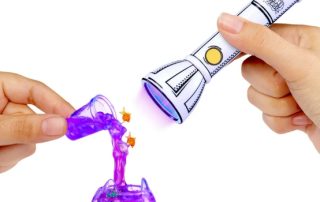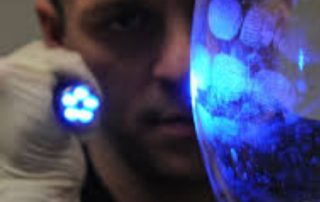Choosing the Right UV Light for Printing Inspection
UV lights are essential tools for printing inspection, enabling precise quality control and detection of defects such as uneven ink application, coating flaws, and counterfeit prevention. Selecting the right UV light involves understanding key factors such as wavelength, power, and flashlight type. This guide will help you make an informed decision for your printing inspection needs. Understanding UV Light Wavelengths Wavelengths play a critical role in UV light effectiveness for different printing inspection tasks. Wavelength Application Advantages Limitations 365nm Fine details, security printing High precision, works on specialized UV inks Higher cost 395nm General-purpose inspection Affordable, visible fluorescence Less effective [...]
UV Flashlight: The Ultimate Guide to Choosing the Right One
UV flashlights have become an essential tool in various industries and applications, from crime scene investigation to resin curing, mineral identification, leak detection, and non-destructive testing (NDT). But with so many options available, how do you choose the right UV flashlight for your needs? In this ultimate guide, we’ll explore the factors to consider when buying a UV flashlight, common applications, and tips for selecting the best one for your specific purpose. For top-quality UV flashlights, check out Tank007 for professional-grade products and expert advice. 1. What is a UV Flashlight? A UV flashlight emits ultraviolet light, a type of [...]
Best UV Flashlights for Leak Detection in 2025
As industries increasingly rely on advanced tools for efficiency and precision, UV flashlights have become indispensable for leak detection. From automotive repairs to HVAC maintenance and industrial pipeline inspections, UV flashlights help professionals identify leaks accurately and efficiently. In this article, we’ll guide you through the best UV flashlights for leak detection in 2025, their features, and how to choose the ideal one for your needs. 1. Why Use UV Flashlights for Leak Detection? UV flashlights are used with fluorescent leak detection dyes that glow under ultraviolet light. These dyes are added to systems containing liquids or refrigerants (e.g., HVAC [...]
How to Use a UV Ink Detection Flashlight: Step-by-Step Guide
UV ink detection flashlights are essential tools in various industries, including security, quality control, and entertainment. They help reveal hidden ink markings that are invisible under normal light. This step-by-step guide will walk you through how to use a UV ink detection flashlight effectively, highlight key considerations, and provide tips for optimal results. 1. Understanding UV Ink and UV Flashlights What is UV Ink? UV ink is a special type of ink that fluoresces (glows) under ultraviolet light. It is commonly used in: Currency Authentication: Detect counterfeit money. Event Security: Hand stamps at events or clubs. Product Labeling: Invisible labels [...]
How to Use a UV Flashlight for Mineral Identification: Step-by-Step Guide
IntroductionMineral identification using UV flashlights is a fascinating and practical technique widely used by geologists, collectors, and hobbyists. UV flashlights allow you to observe fluorescence, phosphorescence, and other unique optical properties of minerals that are invisible under normal light. This guide will take you step-by-step through the process of using a UV flashlight for mineral identification, from preparation to observation and analysis. 1. Understanding UV Flashlights for Mineral Identification UV flashlights come in three primary types based on their wavelength: TypeWavelength Range (nm)Best ForExamples of Fluorescent MineralsUVA (Longwave)320–400Common field inspectionsFluorite, CalciteUVB (Midwave)280–320Specialized researchFew select phosphorescent mineralsUVC (Shortwave)100–280Laboratory and detailed inspectionsWillemite, [...]
What is UV Light and How Does It Interact with Minerals?
IntroductionUltraviolet (UV) light is a type of electromagnetic radiation with wavelengths shorter than visible light but longer than X-rays. It plays a crucial role in various scientific, industrial, and recreational applications, including the study and identification of minerals. UV light interacts with minerals in unique ways, often causing them to fluoresce, phosphoresce, or reveal hidden characteristics. This article explores the science behind UV light, its interaction with minerals, and the principles that govern this fascinating phenomenon. 1. Understanding UV Light Type of UV LightWavelength Range (nm)Common ApplicationsUVA (Longwave)320–400Mineral identification, counterfeit detectionUVB (Midwave)280–320Medical treatments, sterilizationUVC (Shortwave)100–280Sterilization, laboratory research UVA (Longwave UV [...]
The Essential Role of UV Flashlights in Forensic Investigations: Uncovering Hidden Clues
In the world of criminal investigations, the search for hidden evidence is critical to solving cases and securing justice. Traditional investigative methods, while valuable, can sometimes overlook subtle or hidden clues. This is where ultraviolet (UV) flashlights become invaluable tools in forensic science. UV flashlights allow investigators to reveal hidden evidence that is invisible under normal light, aiding in the detection of trace materials, bodily fluids, and other important forensic markers. This article explores the essential role of UV flashlights in forensic investigations and highlights their practical applications in solving crimes. What Makes UV Flashlights Important in Forensic Science? Ultraviolet [...]
Unlocking Hidden Evidence: The Role of UV Flashlights in Forensic Science
In the world of forensic investigations, uncovering hidden evidence is essential to solving crimes. Whether it’s a homicide, assault, or robbery, forensic experts rely on a range of specialized tools to detect critical clues. One such tool that has become indispensable in modern crime scene analysis is the ultraviolet (UV) flashlight. These flashlights allow investigators to reveal hidden evidence that would otherwise remain invisible to the naked eye. From detecting bodily fluids to uncovering trace evidence, UV flashlights play a crucial role in forensic investigations. In this article, we will discuss how UV flashlights are used in forensic science and [...]
How to Choose the Best UV Flashlight for Forensic Investigations
Forensic investigations require precision tools that can uncover evidence invisible to the naked eye. A UV flashlight is one such tool, indispensable for detecting substances such as bodily fluids, trace materials, and counterfeit evidence. However, choosing the best UV flashlight for forensic work can be challenging due to the technical specifications and unique needs of crime scene investigation. 1. Understanding the Role of UV Flashlights in Forensic Investigations UV flashlights are widely used in forensic investigations to detect materials that fluoresce under ultraviolet light. These include: Biological Evidence: Bodily fluids (blood, saliva, sweat, semen). Trace Evidence: Fibers, fingerprints, and gunshot [...]
Step-by-Step Guide to Using UV Flashlight for Resin Curing
UV flashlights play a crucial role in resin curing, offering precision and control for projects requiring strong and durable results. This guide provides a detailed step-by-step process for using UV flashlights in resin curing and highlights important considerations to ensure optimal results. Introduction to UV Resin Curing UV resin curing involves using ultraviolet light to initiate a photochemical reaction that hardens liquid resin into a solid form. This process is commonly used in crafting, jewelry making, coatings, adhesives, and electronics. Compared to traditional curing methods, UV curing offers faster results, greater control, and fewer environmental impacts. Step-by-Step Guide to Curing [...]
The Role of UV Flashlights in Forensic Science: Enhancing Crime Scene Investigations
In forensic science, the ability to detect hidden evidence is crucial for solving cases and bringing criminals to justice. One of the most powerful tools at the disposal of forensic investigators is the UV flashlight. These devices are not only essential for detecting biological fluids and trace evidence but also play a key role in uncovering hidden clues that would otherwise go unnoticed. In this article, we will explore how UV flashlights are used in forensic investigations, their specific applications, and why they are indispensable in solving complex criminal cases. What is UV Light and Why is It Important in [...]
The Role of UV Flashlights in Crime Scene Investigation
Introduction In modern crime scene investigations, ultraviolet (UV) flashlights have become essential tools for forensic experts. They are used to detect, analyze, and document evidence that is invisible to the naked eye. UV light can reveal bodily fluids, fingerprints, drug residues, and trace evidence, significantly improving the efficiency and accuracy of investigations. This article explores the science behind UV flashlights, their practical applications, and key considerations when using them in forensic work. 1. The Science Behind UV Flashlights in Forensics UV light is a type of electromagnetic radiation with wavelengths shorter than visible light but longer than X-rays. For forensic [...]



